Table 1.
Several types of ET processes
| Types | Schematic of strategies | Remarks |
|---|---|---|
| EFE |
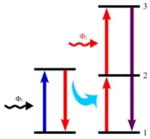
|
Energy is transferred from the sensitizing ion from an excited state to the activating ion in its state 1 by an ET, promoting the activating ion to its state 2. Next, the activating ion is promoted to its state 3 through an ESA. |
| SET |
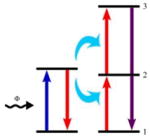
|
The activating ion in state 1 is promoted to its state 2 by an ET. Next, an activating ion is promoted again to its state 3 via a second ET. Only the sensitizing ion can absorb photos from the incident light. |
| CR |
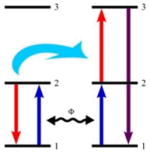
|
The sensitizing ion and the activating ion are identical ions. Photons from the incident light are absorbed by both ions, promoting these ions into state 2. An ET then promotes the activating ion to its state 3 while the sensitizing ion goes into its lower energy state. |
| CS |
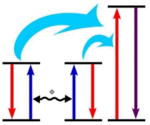
|
The energy accumulated from two sensitizing ions in their respective excited states is transferred to a single activating ion, promoting the activating ion to its higher excited state. |
| CL |
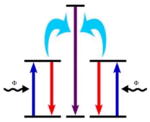
|
The emission comprises a single process of one photon from two excited interacting ions which act as both the sensitizing ion and the activating ion. |
